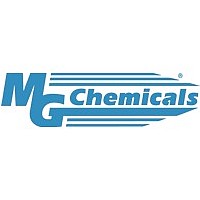RTV5818-300ML MG Chemicals, RTV5818-300ML Datasheet - Page 6

RTV5818-300ML
Manufacturer Part Number
RTV5818-300ML
Description
ADHESIVE SEALANT SIL FAST CURE
Manufacturer
MG Chemicals
Series
RTVr
Type
Potting Compound, 1 Partr
Specifications of RTV5818-300ML
Features
Marine Application
Product
Silicones
Size
10 oz
Application
Use in assembly applications requiring high productivity, also good for marine applications
Chemical Component
Silicone
Color
Translucent
Dielectric Strength
16.8 KV⁄mm
Dispensing Method
Cartridge
Elongation
435%
Hardness
24 (Shore A)
Primary Type
Adhesive
Special Features
High Strength, Non-Corrosive
Specific Gravity
1.04
Standards
UL Recognized
Temperature Range
-60 to +205 °C
Temperature, Rating
-60 to +204 °C
Tensile Strength
1.86 MPa
Thermal Conductivity
0.06 W⁄m.°K
Time, Cure
12 hr
Time, Setting
15 min.
Viscosity
360 g⁄Minute
Volume Resistivity
2 x 10^15 Ohm.cm
Weight
10 Oz.
Main Industry
Electronics
For Use With/related Products
Non Corrosive
Lead Free Status / RoHS Status
Lead free / RoHS Compliant
SENSITIZATION
SKIN IRRITATION
EYE IRRITATION
MUTAGENICITY
12. ECOLOGICAL INFORMATION
ECOTOXICITY
RTV5818 12C-Crtrg (0.738LBS-0.335KG)
Silicone Rubber Sealant
octamethylcyclotetrasiloxane (1600 mg/kg day, 14 days) developed increased liver weights relative to
unexposed control animals due to hepatocellular hyperplasia (increased number of liver cells which
appear normal) as well as hypertrophy (increased cell size). Inhalation: In inhalation studies,
laboratory rodents exposed to octamethylcyclotetrasiloxane (300 ppm five days week, 90 days)
developed increased liver weights in female animals relative to unexposed control animals. When the
exposure was stopped, liver weights returned to normal. Microscopic examination of the liver cells did
not show any evidence of pathology. Inhalation studies utililizing laboratory rabbits and guinea pigs
showed no effects on liver weights. Inhalation exposures typical of industrial usage (5-10 ppm)
showed no toxic effects in rodents. Range finding reproductive studies were conducted (whole body
inhalation, 70 days prior to mating, through mating, gestation and lactation) with
octamethylcyclotetrasiloxane (D4). Rats were exposed to 70 and 700 ppm. In the 700 ppm group,
there was a statistically significant reduction in mean litter size and in implantation sites. No D4
related clinical signs were observed in the pups and no exposure related pathological findings were
found. Interim results from a two generation reproductive study in rats exposed to 500 and 700 ppm
D4 (whole body inhalation, 70 days prior to mating, through mating, gestation and lactation) resulted in
a statistically significant decrease in live mean litter size as well as extended periods of off-spring
delivery (dystocia). These results were not observed at the 70 and 300 ppm dosing levels. Preliminary
results from an ongoing 24-month combined chronic/oncogenicity study in rats exposed to 10, 30, 150,
or 700 ppm D4 showed test-article related effects in the kidney (male and female) and uterus of rats
exposed for 12 to 24 months. These effects include increased kidney weight and severity of chronic
nephropathy, increased uterine weight, increased incidence of endometrial cell hyperplasia, and an
increased incidence of endometrial adenomas. All of these effects are limited to the 700 ppm
exposure group. The relevance of these data to humans is unclear. Further studies are ongoing. In
developmental toxicity studies, rats and rabbits were exposed to octamethylcyclotetrasiloxane at
concentrations up to 700 ppm and 500 ppm respectively. No teratogenic effects (birth defects) were
observed in either study., Contains dibutyltin compound(s) - May impair fertility. May cause harm to
unborn child.
No data available
No data available
Unknown
No data available
No data available
Page 6/8
Material Safety Data Sheet
Version: 1.5
03/28/2008







